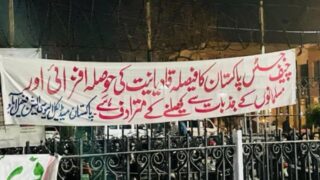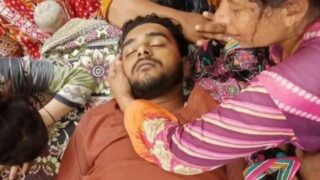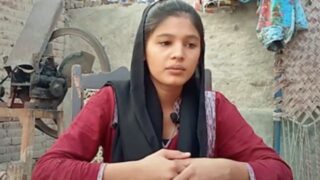Founded in 1996, LeJ emerged as the most radical anti-Shi’a groups, and the only one able to launch a terrorism campaign against the Hazaras in Balochistan.
by Massimo Introvigne
Article 3 of 5. Read article 1 and article 2.
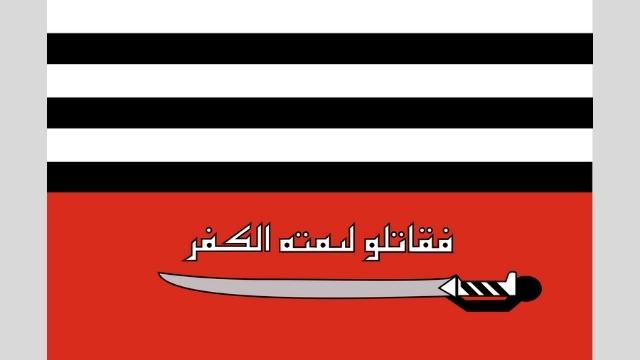

In the 1980s, violence between Sunni and Shiite Muslims was mostly concentrated in the Jhang district in Punjab, where it was fueled by an old social conflict between Shiite landlords and Sunni peasants. Shiite activism opposing the persecution was also mostly recruiting its militants among non-Hazaras.
The Shi’a self-defense organization Tehreek Nifaz-e-Fiqh Jafariya Pakistan (TNFJ), discussed in the previous article of this series, experienced internecine struggles in the late 1980s. One of its two main factions in 1988 adopted the name Tehreek-e-Jafariya Pakistan (TJP), Sippah-e-Muhammad Pakistan (SMP), as a splinter group from TJP, was established in 1993 by Maulana Mureed Abbas Yazdani (1967–1996). It criticized TNFJ and TJP for their increasingly non-violent attitudes, and waged a campaign of terrorist attacks against Sunni Deobandi targets.


Ironically, Yazdani was himself accused of not being radical enough by some of his followers, and was killed in 1996, reportedly at the instigation of his second-in-command Ghulam Raza Naqvi (d. 2016). Naqvi was arrested in the same year 1996, and in the subsequent decade the Pakistani Army and police managed to eradicate the SMP and arrest all his leaders. Having spent 18 years in jail, Naqvi was liberated in 2014 and died in 2016 during a pilgrimage to the Iranian city of Mashhad. None of these Shiite para-military organizations had a significant following among the Hazaras.
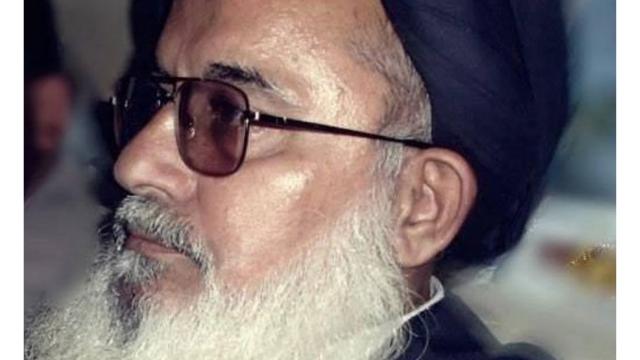

Naqvi died of natural causes, while TNFJ’s leader Arif Hussain al-Hussaini and his Sunni arch-rival, Sunni anti-Shiite cleric Haq Nawaz Jhangvi, were both assassinated, respectively in 1988 and 1990. Jhangvi’s last name became part of the name of a new organization, Lashkar-e-Jhangvi (Jhangvi’s Army, LeJ), established by Riaz Basra (1967–2002) in 1996. Both Basra and his successor Malik Ishaq (1959–2015) were killed in armed conflicts with the Pakistani police.
If anything, LeJ was even more radical than its predecessor organizations in its opposition to Shiites. The manifesto of LeJ is worth quoting, and clearly spells out the organization’s objectives: “1) Struggle for the establishment of Islamic Shariah government in Pakistan and the entire world and remove all obstacles toward it.
2) Declare Shi’a a non-Muslim minority.
3) Kill every person who blasphemes or insults the Prophet Muhammad (peace be upon him), the Prophet Muhammad’s pure wives, companions, the Quran, and the religion of Islam.
4) Kill every journalist, businessman, lawyer, bureaucrat, doctor, engineer, or professor who misuses his social position to tarnish the beliefs of Muslims or engage in any way in the preaching or publishing against the Islamic creed and beliefs.
5) Kill every person who helps the enemies of Islam with financial, military, residential, or any other way of assistance. Lashkar-e-Jhangvi recognizes that Shi’a are the biggest obstacle in the path of Islam and they make the greatest effort to corrupt and destroy Muslim beliefs. The Shiites are the biggest insulters of the Prophet, the Prophet’s pure wives, companions, books, and religion. For this reason, Lashkar-e-Jhangvi has made Shi’a its first and primary target. But alongside this, Lashkar-e-Jhangvi has conducted operations from time to time against other Islam-enemy sects in accordance with the time and sensitivity of the situation. But the core target and goal of Lashkar-e-Jhangvi has been and will continue to be Shi’a.”


LeJ was also the first anti-Shiite Sunni organization capable of taking roots in Balochistan, where it targeted the Hazaras. There is a certain rhetoric in Balochi media blaming LeJ’s activities there to Punjabis. Certainly, the national leaders of LeJ are largely Punjabis. However, LeJ militants in Balochistan do not simply execute orders coming from outside the province. LeJ anti-Hazara terrorist campaign in Balochistan was largely devised by local leaders such as Usman Saifullah Kurd (d. 2015) and Dawood Badini, who happens to be the nephew of Khalid Sheikh Mohammad, the al-Qa’ida leader accused by the United States of being the “principal architect” of the 9/11 terrorist attacks.
Kurd and Badini had a key role in LeJ anti-Hazara attacks in Balochistan, which started with the attempted assassination of the Hazara provincial Education Minister Sardar Nisar Ali Hazara in 1999. Although the minister survived, the attack started a wave of killings of members of the Hazara political and cultural elite.
In 2003, allegedly at the request of Malik Ishaq, although the extent of Ishaq’s ability to control LeJ militants in Balochistan was disputed, anti-Hazara terrorism escalated from targeting individual Hazara leaders to indiscriminate mass killings. The new orientation started with the killing of 12 Hazara police cadets in June 2013, followed in July by an attack against devotees gathered for the Friday prayer that killed 53 men in Quetta. On March 2, 2004, also in Quetta, 42 Hazaras were killed during an Ashura procession. The number of attacks diminished after Badini was arrested in 2003, and Kurd in 2006. However, they managed to escape from jail in 2008, and resumed their terrorist activities.


